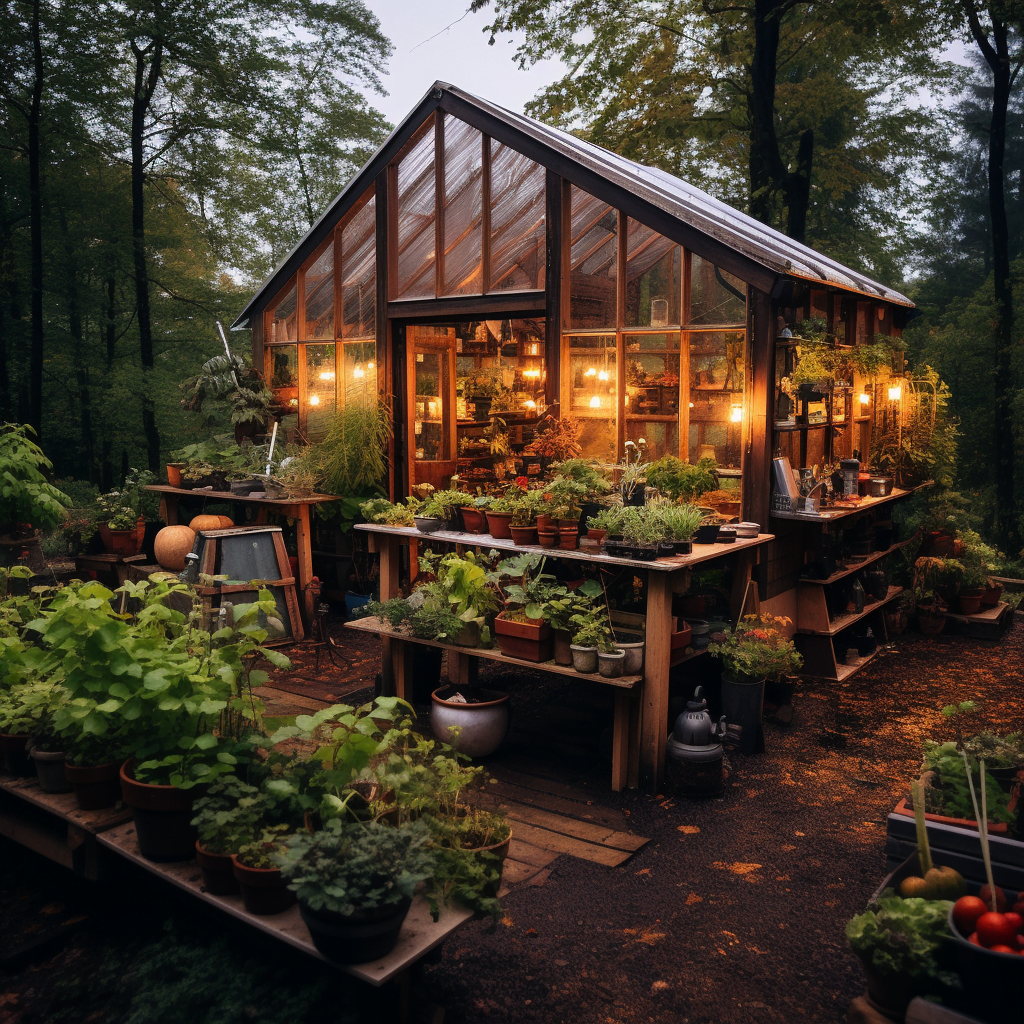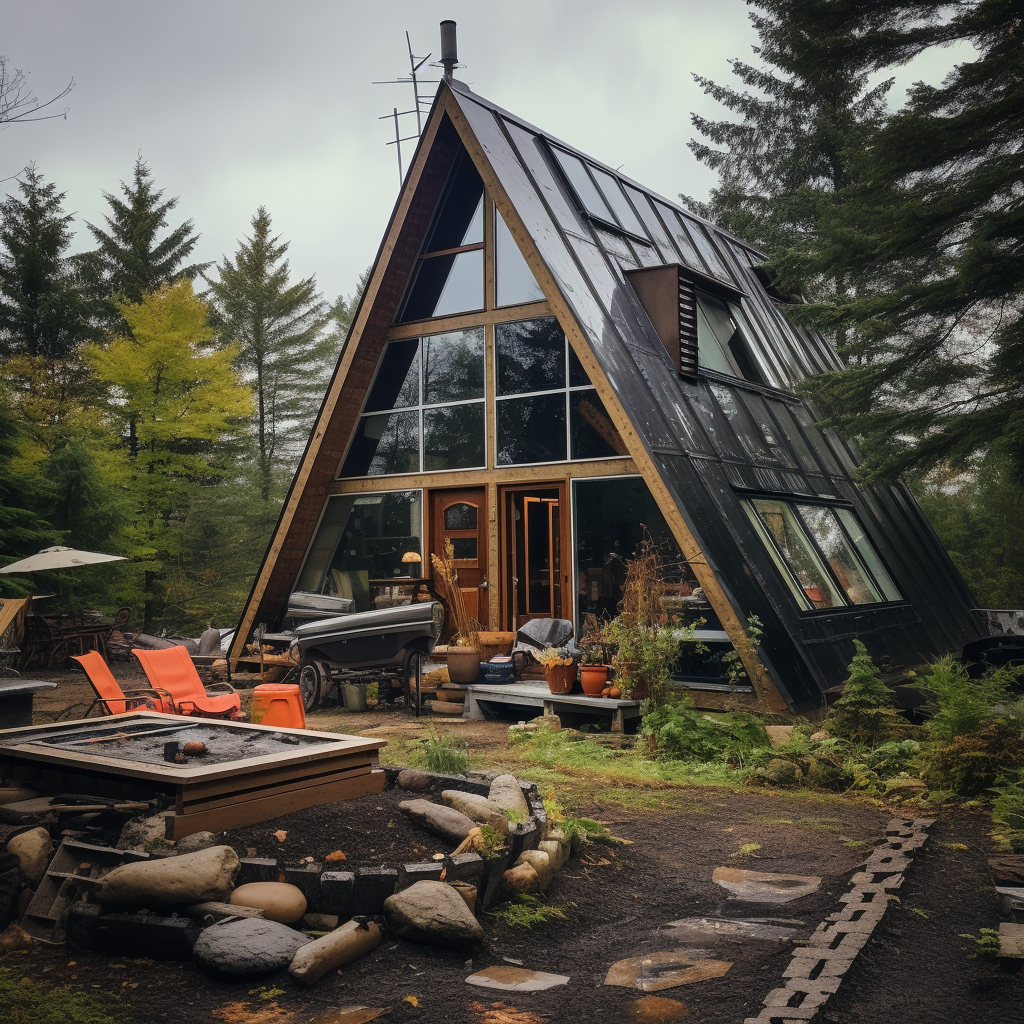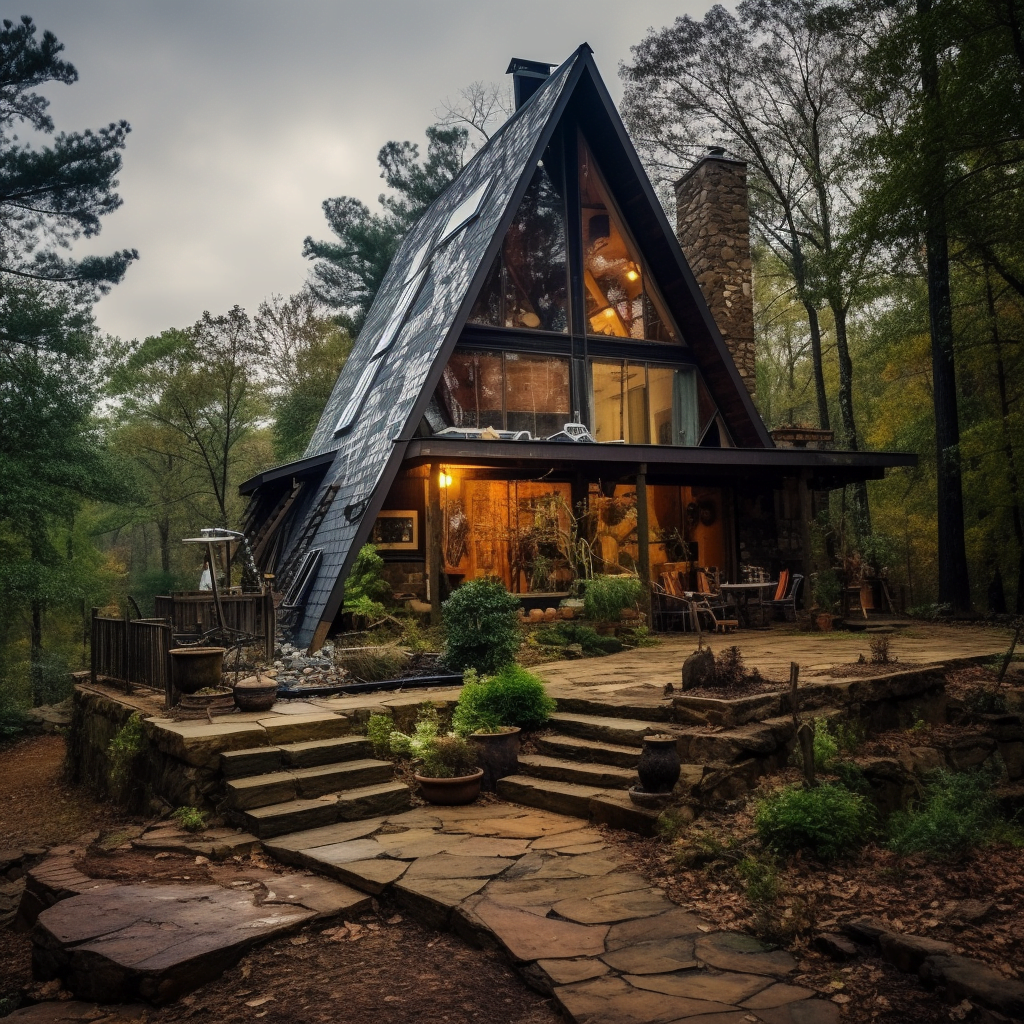Bringing you closer to nature, one solar panel at a time.
Introduction
The 21st century has brought a surge of interest in sustainable living, with off-grid homes sitting at the very core of this green revolution. A curious mix of age-old wisdom and bleeding-edge technology, these homes symbolize a redefined relationship with the Earth, one that balances human needs with the natural ecosystem.
From the swanky fringes of Silicon Valley to the tranquil landscapes of rural Scotland, the idea of unplugging from the grind of city life and finding harmony in nature is gradually transcending socio-economic boundaries.
Understanding Off-Grid Living
In the heart of off-grid living lies a profound philosophy, a paradigm shift from the consumption-driven world towards a model of resourceful simplicity and self-reliance. It is a conscious act of resistance against the overbearing and often wasteful norms of modern urban living.
“Off-grid living is not a trend; it’s a resurgence of a wiser, conscientious way of life.”
The environmental implications of off-grid living are significant. By tapping into renewable energy, minimizing waste, and promoting biodiversity, these homes contribute positively to the fight against climate change. Financially too, an off-grid life has its advantages. Though initial setup costs may be substantial, long-term savings are sizeable as dependency on municipal utilities dwindles.
The benefits, however, are not just quantifiable metrics. Living off-grid fosters a deep sense of connection with the environment. It cultivates patience, resilience, and inventiveness, qualities that are becoming increasingly rare in our fast-paced world.

Key Features of Off-Grid Homes
Self-sufficiency in Energy Production
A quintessential feature of off-grid homes is their ability to produce their own energy. These homes leverage a variety of renewable energy sources, each with its unique merits and suitability.
- Solar Panels: Harnessing the sun’s energy, solar panels are a common fixture in off-grid homes. Their declining costs and increasing efficiency make them a go-to choice for many.
- Wind Turbines: In regions with consistent wind, small-scale wind turbines can provide substantial power, often complementing solar installations.
- Hydroelectric Power: For homes near a flowing water source, micro-hydro systems can generate power 24/7, providing a reliable energy solution.
- Bioenergy Sources: Techniques like anaerobic digestion or biomass gasification can convert organic waste into heat and power, closing the waste-energy loop.
Water Systems
Water, a critical resource, is addressed in off-grid homes with great care and ingenuity. The key here is to establish a multi-pronged approach that balances consumption, reuse, and replenishment.
- Rainwater Harvesting: Collecting and storing rainwater for use is an ancient practice that’s gaining renewed interest. Modern systems can efficiently capture, filter, and store rainwater for all domestic needs.
- Wells: In certain areas, wells can provide a dependable source of clean water, drawn up using solar-powered pumps.
- Water Purification Systems: Off-grid homes often use filters, ultraviolet sterilizers, or even natural methods like sand filtration or constructed wetlands to ensure water safety.
Waste Management Systems
Living off the grid also implies responsibly dealing with waste. The idea is to view waste not as a problem, but as a resource that can be reintegrated into the ecosystem.
- Composting Toilets: These toilets turn human waste into valuable compost, reducing water usage and eliminating the need for a sewage connection.
- Greywater Systems: Greywater, which is relatively clean waste water from baths, sinks, and washing machines, can be safely reused for irrigation, reducing overall water demand.
Stay tuned for the continuation of this comprehensive guide, where we dive into food production and storage, explore the diversity of off-grid home designs, and delve into the essential technologies and appliances that make these homes efficient and comfortable.
Food Production and Storage
A crucial element of off-grid living is the ability to produce and store your own food. This not only cuts down on grocery bills and packaging waste but also ensures access to fresh, nutritious, and organic food year-round.
- Home Gardening and Permaculture: Many off-grid homes have flourishing gardens, utilizing techniques such as permaculture, companion planting, and raised beds. This approach fosters biodiversity, enhances soil health, and reduces the need for synthetic fertilizers or pesticides.
- Preservation and Canning: Harvested produce can be preserved by canning, freezing, or dehydrating, enabling off-gridders to enjoy home-grown fruits, vegetables, and herbs even in the off-season.
Popular Types of Off-Grid Homes
Off-grid homes come in all shapes and sizes, each reflecting the unique ethos and lifestyle of its inhabitants. While some people prefer traditional designs, others experiment with more unconventional structures. Here are a few popular types:
- Cabins: Offering a timeless charm, cabins have long been a favorite for those seeking solitude in nature. With modern innovations, these homes can be as rustic or as high-tech as desired.
- Tiny Houses: As a statement against excessive consumption, tiny houses prove that you can live comfortably and sustainably in a space no larger than a typical living room.
- Earthships: These unique homes, made from natural and recycled materials, are designed to be self-sufficient, featuring passive solar heating, internal food production, and efficient water collection systems.
- Cob Homes: Constructed from a blend of clay, sand, and straw, cob homes offer an organic aesthetic and excellent thermal mass, keeping the house warm in winter and cool in summer.
- Shipping Container Homes: With their rugged durability and modular design, repurposed shipping containers have become a popular choice for off-grid homes.
- Other Natural Homes: Innovations continue with Earthbag homes, straw-bale homes, and other natural building techniques, combining traditional wisdom with modern science.
Essential Technologies and Appliances for Off-Grid Homes
Living off-grid does not mean giving up on comforts. Rather, it’s about choosing efficient technologies and appliances that harmonize with the lifestyle. Here are some essentials:
- Energy-Efficient Appliances: From LED lighting to high-efficiency fridges, off-grid homes often use appliances that deliver excellent performance while minimizing energy consumption.
- Battery Storage and Backup Generators: To ensure a steady power supply, homes may use battery systems for storing excess energy, or backup generators for times when renewable sources aren’t sufficient.
In the concluding part of this guide, we’ll walk you through the process of building your own off-grid home, discuss the regulatory aspects to consider, and take you on a virtual tour of some real-life examples of off-grid homes around the world.
Building an Off-Grid Home
Ready to take the leap into off-grid living? Here are some considerations to guide you in your journey:
- Evaluating and Choosing a Location: Consider factors such as climate, access to water sources, and local regulations. An ideal location should have ample sunlight for solar power, good wind patterns if you plan on harnessing wind energy, and fertile soil if you intend to grow your own food.
- Assessing Available Resources: Understanding the available resources in your chosen location will help you design a home that makes the most of them. This includes assessing the potential for solar, wind, or hydro power, the availability and quality of groundwater, and the suitability of the soil for construction and agriculture.
- Design and Construction Process: Design your home to maximize natural lighting and insulation, minimize waste, and harmonize with the surrounding environment. During construction, opt for eco-friendly materials and techniques whenever possible.
- Regulatory Aspects to Consider: Make sure you understand the building codes and zoning regulations in your area. You may need to secure permits for things like septic systems, water wells, and certain types of structures.
Real Examples of Off-Grid Homes
To give you a taste of what’s possible, let’s look at some real-life off-grid homes:
- The Off-Grid Tiny House in New South Wales: A fine example of compact living, this tiny house on wheels features a solar power system, composting toilet, rainwater collection system, and a small permaculture garden.
- The Shipping Container Home in Joshua Tree: This modern desert retreat uses solar panels for electricity and a well for water. It’s made from three shipping containers, featuring a minimalist interior and large windows that offer panoramic desert views.
- The Earthship in California: This innovative home, built from recycled tires and cans, uses solar power, rainwater harvesting, and indoor food production, truly embodying the ethos of off-grid living.
- The A-Frame Cabin in the Catskills: Nestled in the woods, this charming cabin is a testament to simplicity and self-sufficiency. It’s heated with a wood stove, lit by solar power, and offers a perfect getaway from the hustle and bustle of city life.
- The Tiny Cabin in Canada: A minimalist’s dream, this tiny cabin is powered by a single solar panel and heated by a wood-burning stove. It showcases how off-grid living can be both sustainable and beautifully simple.

Conclusion
Off-grid homes are more than just buildings. They are a tangible manifestation of a lifestyle that values self-reliance, sustainability, and harmony with nature. With the ever-growing environmental crisis, shifting towards such a lifestyle can make a significant impact.
Embracing a Sustainable Lifestyle: Choosing to live off the grid is a conscious decision to reduce your ecological footprint and live in a more sustainable manner.
The Rewards and Benefits of Off-Grid Living: Off-grid living can offer freedom from utility bills, a more in-tune relationship with nature, and the satisfaction of being self-reliant.
Contributing to a Greener Future with Innovation and Technology: Innovations in renewable energy, water management, waste disposal, and sustainable building materials have made off-grid living more feasible and comfortable than ever.
By choosing to live off the grid, you’re not just opting for a different kind of home. You’re making a bold choice to value the planet and future generations over immediate convenience and consumption. It’s a lifestyle that fosters resilience, creativity, and a profound respect for the earth and all its inhabitants. And who knows? In the process, you might just revolutionize sustainable living.
Frequently Asked Questions
1. What is off-grid living?
Off-grid living refers to a lifestyle that aims for self-sufficiency and minimal reliance on public utilities. Off-grid homes typically generate their own electricity (often through renewable sources), source water locally, manage waste in an eco-friendly manner, and often produce their own food.
2. What are the benefits of off-grid living?
Living off the grid has numerous benefits, including:
- Environmental sustainability: By using renewable resources and reducing waste, off-grid living lessens your environmental impact.
- Financial savings: Over time, the savings from generating your own power and other resources can be substantial.
- Independence: Off-grid living fosters self-reliance, as you’re not dependent on public utilities.
- Connection with nature: This lifestyle often brings you closer to nature, fostering a deeper appreciation and understanding of the natural world.
3. What types of homes are suitable for off-grid living?
There’s a wide range of homes suitable for off-grid living. Some popular options include tiny houses, cabins, earthships, cob homes, and shipping container homes. The choice depends on your personal preferences, budget, climate, and available resources.
4. What do I need to consider before building an off-grid home?
Before building an off-grid home, you should consider the following:
- Location: You’ll need a location with access to resources such as sunlight for solar power, wind for wind turbines, and water.
- Local regulations: Make sure to understand and comply with any building codes and zoning laws in your chosen area.
- Design: Your home should be designed to optimize energy efficiency and make the most of available resources.
- Cost: Off-grid homes can have high initial setup costs, but these can often be offset by future savings.
5. Can I live off the grid in any climate?
Yes, but different climates require different strategies for off-grid living. For example, solar power might be a great option in sunny climates, while a wood stove could be a more effective heating solution in forested areas. In arid regions, rainwater collection might not be reliable, so you may need to consider other water sources. It’s crucial to design your off-grid home and lifestyle around the resources available in your particular climate.
6. Is off-grid living legal?
Off-grid living is legal in most places, but regulations can vary widely. Some areas have restrictions on certain off-grid practices or require permits for certain activities like well drilling or septic system installation. Always check the local laws and regulations before you start your off-grid journey.




